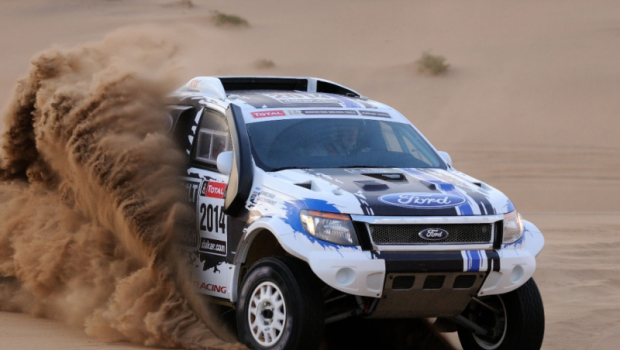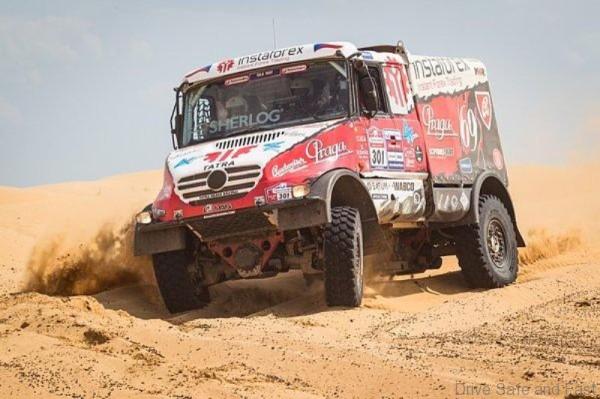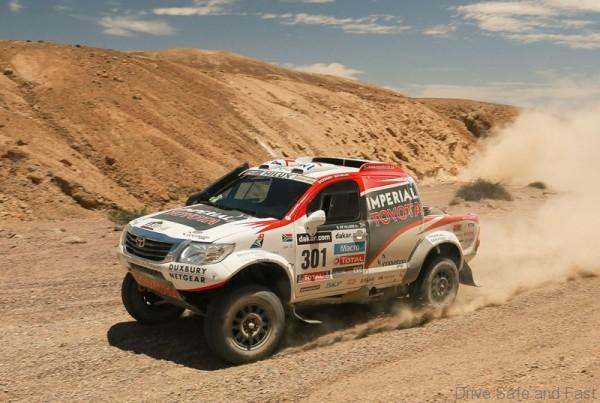Dakar Rally 2014_What You Need To Know
For many years, the Dakar organisers have endeavoured to adapt the race route to South America’s open terrain, enabling all categories of vehicle to explore the routes which are best suited to them. For the 2014 edition, five special stages have been marked out on completely separate routes, with motorcycles and quad bikes on one hand and cars and trucks on the other. Overall, the ‘separation’ includes around 2,000 kilometres of timed sections, covering more than 40% of the distance.
In sporting terms, this has the double advantage of taking motorcycle and quad riders onto more technical and narrower tracks during some stages, while enabling the leaders of the car race to ‘hit the trail’ without using the tracks left by the two-wheelers.
This is also a decisive advantage in terms of safety, as separating the routes eliminates all situations requiring careful overtaking. The benefit is even greater given that the stages in question are essentially in the first part of the rally, when there are many vehicles on the track.
Motorcycles-quad bikes: two marathon stages
On two occasions, riders in the motorcycle and quad bike categories will embark upon marathon stages, extending over two days. With overnight accommodation in a bivouac reserved exclusively for them, the riders will not have the back-up of their assistance teams, and will have to rely on help from other competitors to make any adjustments to their vehicles. In this context, team strategies are crucial and the management of equipment is decisive, particularly in terms of wear and tear on tyres.
In total, the two marathon stages will represent 2,702km (1,228km between San Rafael and Chilecito plus 1,474km between Salta and Calama), including a special stage of 1,590km (726 km and 864 km).
THREE COUNTRIES: ARGENTINA – BOLIVIA – CHILE
A visit to Bolivia
The organisers of the Dakar were keen to discover new regions and were won over by the Bolivian landscapes, ranked among the most stunning ones that the continent has to offer. Nevertheless, their wish to take the 2014 edition’s competitors there had to be weighed up against the geographical and climatic difficulties, which make the preparation of a “classic” stage through Bolivia harder. So the Dakar’s route will cross the border in a particular way, with a marathon stage in the south of the country. This unique format, which may only concern motorcycles, will allow a new strategy to be tested on the rally, opening the way to new possibilities.
Several marathon stages
The organisers’ extensive knowledge of Argentina and Chile will allow the stages to be meticulously marked out. To highlight the physical and strategic aspects comprising the essence of off-road races, the 2014 Dakar will boast longer special stages and shorter liaison sections. The distinctive features of North West Argentina’s tracks and the dunes will require the drivers to be attentive at all times and the Atacama Desert will appear in a new light with the difficulties that the vehicles will face there. With several marathon stages on the agenda, managing mechanics will be even more vital to ensuring the vehicles’ performance.
ROSARIO – VALPARAISO: UNIQUE PORTS, FAR APART
Rosario
The blue and white stripes proudly worn by the national football and basketball teams, champions the world over thanks to victories at the World Cup and the Olympic Games were originally worn in Rosario. In the middle of the War of Independence, in 1812 to be precise, General Manuel Belgrano designed and hoisted the Argentinean flag for the first time, and chose the colours of the cockade used by the revolutionaries he was leading. Since then, this city, on the right bank of the Rio Parana, has been prosperous, benefiting from a geographically favourable position, and is at an equal distance from both Buenos Aires and Cordoba, the two cities which surpass it in terms of population.
A centre for communications and exchange, Rosario has in particular won over the hearts of Argentineans, thanks to a few of its natives. The most famous of these remains Ernesto Guevara who, long before becoming the “Che”, was born in Rosario. Much later, it was also here that a young boy named Lionel Messi first began playing football, in particular for the Newell’s Old Boys, a club for which Diego Maradona also played a few matches. By welcoming the drivers and teams of the Dakar during the first few days of 2014, the city will have the opportunity to become a part of the rich national history of motor sports, like Buenos Aires and Mar del Plata.
Valparaiso
Rosario and Valparaiso, the two port cities, which have influenced the history of trade over the centuries and are each situated on opposite sides of the continent, have already been twinned for almost twenty years. They will also be united through sport thanks to the route that will be marked out for the 2014 Dakar. Founded in the 16th century, Valparaiso developed through trade from then, with one of the only harbours able to accommodate the biggest ships in this part of the Pacific. Consequently, passing sailors and traders turned it into one of the most dynamic cities in 18th and 19th century Chile. Although it is no longer a mandatory stop-off point on the way to Cape Horn since the opening of the Panama Canal, Valparaiso has preserved a strong cultural tradition from its heyday.
The El Mercurio de Valparaiso daily newspaper, set up in 1827, bears witness to this period and remains the oldest Spanish-language newspaper still published. And it was no coincidence that the country’s most renowned writer-activist, Pablo Neruda, lived there for so many years. The appeal of the 44 hills overlooking the ocean, covered in colourful houses which delight painters and photographers alike, makes this view one-of-its kind and has given Valparaiso its nickname of the “Pearl of the Pacific”. The Dakar’s drivers, who naturally have fond memories of their trip to “Valpo” for the rest day in 2009, will definitely be even more thrilled when they reach the final finish there, 5 years later.
| DATE | START | FINISH |
| 05/01/2014 | Rosario | San Luis |
| 06/01/2014 | San Luis | San Rafael |
| 07/01/2014 | San Rafael | San Juan |
| 08/01/2014 | San Juan | Chilecito |
| 09/01/2014 | Chilecito | Tucumán |
| 10/01/2014 | Tucumán | Salta |
| 11/01/2014 | Rest day | |
| 12/01/2014 | Salta | Salta/Uyuni |
| 13/01/2014 | Salta/Uyuni | Calama |
| 14/01/2014 | Calama | Iquique |
| 15/01/2014 | Iquique | Antofagasta |
| 16/01/2014 | Antofagasta | El Salvador |
| 17/01/2014 | El Salvador | La Serena |
| 18/01/2014 | La Serena | Valparaíso |



















